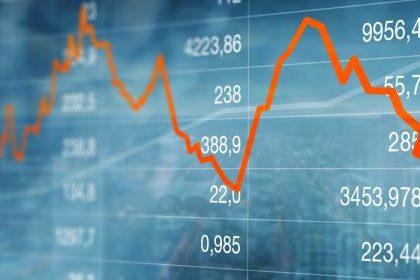This website is strictly for educational purposes and is not intended to provide specific legal, financial, or tax advice. Phil Cannella and Joann Small are licensed professionals in the insurance industry. Crash Proof Retirement, LLC. does not recommend or sell securities to anyone at any time. Any interviews conducted by Retirement Media, Inc ®. published on this website are not to be considered endorsements. Crash Proof Retirement, Crash Proof Retirement Show, and Retirement Media, Inc. ®, and all related uses, are federally trademarked with the United States Patent and Trademark Office. Any company or individual found violating these federal trademarks will be vigorously pursued through all available legal avenues and penalized to the fullest extent of the law. © 2024 Crash Proof Retirement, All Rights Reserved.

Inverted Yield Curve
- April 16, 2019
- Phil Cannella
- Blog
- 0 Comments
The U.S. yield curve measures the relationship between the interest rates of long and short-term fixed-income securities, including bond and treasury yields. It’s an important benchmark financial experts and economists use to predict future economic strength. Typically, short-term interest rates are lower than those of long-term investments but at various points in history, the opposite has been true. When long-term interest rates are lower than those of short-term investments, it’s known as an inverted yield curve and in most cases it has been a precursor to recessions.
We saw inverted yield curves before the recessions of 1981, 1991, 2001, and 2008. Now, in 2019, the dreaded inverted yield curve has once again reared its ugly head and concerned investors are left to wonder what it means for the future. Although we’re currently in midst of the longest bull market run in history, some economists believe the inverted yield curve could once again be a precursor to trouble ahead for stock market investors and recent activity at the Federal Reserve seems to confirm those suspicions.
In 2016, nearly a decade after the stock market chaos that occurred in 2008, markets were once again looking strong, leading the Fed to implement the first of dozens of scheduled interest rate increases. These rate hikes were intended to give policy makers some wiggle room to lower interest rates in the event of a future economic downturn, making it easier to borrow money and stimulate spending. Towards the end of 2018, executive branch support for rising interest rates quickly eroded and in 2019, the Fed announced an end to all scheduled rate increases.
This sudden change in Fed policy has led many financial experts and economists to speculate about the motives behind the move. Some believe this change was made pre-emptively in anticipation of another recession coming in the near future which, if true, could mean big problems for the stock market (and stock market investors) within the next two years.
When it comes to retirement investing, people in or near retirement can’t afford to speculate; they need reassurances that the money in their nest eggs will still be there for them when they retire. With the inverted yield curve being a historical indicator of a coming recession and the Fed’s sheepishness about raising interest rates, it seems that the next economic downturn could be just around the corner. When the 2008 recession hit, millions of investors all around the country lost their retirement savings. If your nest egg is invested in risky securities-based financial instruments, you could end up suffering the same fate.
Luckily, there are some steps you can take to get your money out of the risky stock market before the next crash hits. The Crash Proof Retirement System is composed of a wide variety of financial instruments outside the securities industry that are guaranteed not to lose value in the event of a stock market crash. If you’re interested in obtaining a secure financial future for yourself and your family, the best thing you can do is find out more. Visit crashproofretirement.com and click the “Events” tab to sign up for a Crash Proof Retirement Educational event near you, where Retirement Phase Experts Phil Cannella and Joann Small will tell you more about these safe investments and how they can prevent you from losing everything during the next market crash.


Leave a Reply
You must be logged in to post a comment.